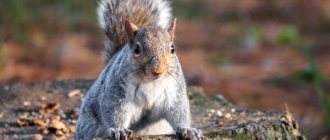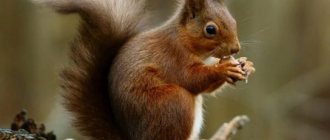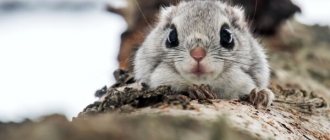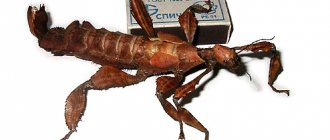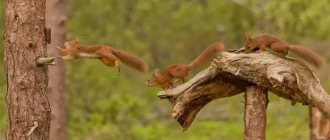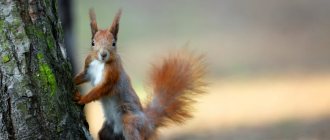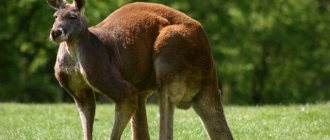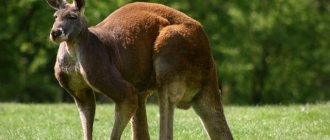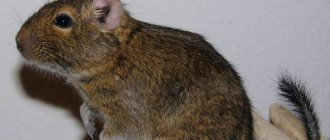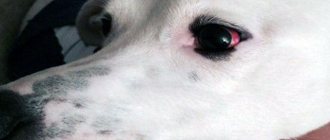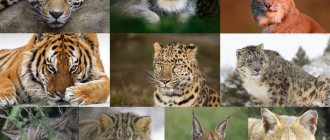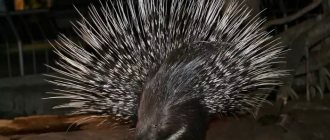Links and literature
- (, p. 394)
- , pp. 132–133
- Corbet, Gordon Barclay.
The mammals of the Indomalayan Region: a systematic review / Gordon Barclay Corbet, Hill. - Oxford: Oxford University Press, 1992. - ISBN 0-19-854693-9. - Ellerman, John R.
Rodentia: variation. — 2nd. - Delhi: Manager of Publications, 1961. - Vol. 3 (in 2 parts). — P. 483–884. - Erxleben, Johann Christian Polykarp.
Systema regni animalis per classes, ordines, genera, species, varietates cum synonymia et historia animalium. Classis I. Mammalia.. - Leipzig, Germany : Impensis Weygandianis, 1777. - Vol. 42. - Schreber, Johann Christian Daniel von.
Der Springer // Die Säugthiere in Abbildungen nach der Natur, mit Beschreibungen. - Erlangen: Wolfgang Walther, 1792. - Vol. 3. - , pp. 24–25
- Blanford, W.T. (1897), "The large Indian squirrel ( Sciurus indicus erx.
) and its local races and sub-species",
Journal of the Bombay Natural History Society
Vol. 11 (2): 298–305 - Prater, S.H. (1971), The book of Indian Animals
, Mumbai: Bombay Natural History Society and Oxford University Press.
pp. xxiii
, 324, 28 color plates by Paul Barruel., ISBN 0-19-562169-7 - Tritsch, Mark F. (2001), Wildlife of India
, London: Harper Collins Publishers. pp. 192, ISBN 0-00-711062-6
Best articles: Structural features and main organelles of plant cells
Links and literature
- (, p. 394)
- , pp. 132–133
- Corbet, Gordon Barclay.
The mammals of the Indomalayan Region: a systematic review / Gordon Barclay Corbet, Hill. - Oxford: Oxford University Press, 1992. - ISBN 0-19-854693-9. - Ellerman, John R.
Rodentia: variation. — 2nd. - Delhi: Manager of Publications, 1961. - Vol. 3 (in 2 parts). — P. 483–884. - Erxleben, Johann Christian Polykarp.
Systema regni animalis per classes, ordines, genera, species, varietates cum synonymia et historia animalium. Classis I. Mammalia.. - Leipzig, Germany : Impensis Weygandianis, 1777. - Vol. 42. - Schreber, Johann Christian Daniel von.
Der Springer // Die Säugthiere in Abbildungen nach der Natur, mit Beschreibungen. - Erlangen: Wolfgang Walther, 1792. - Vol. 3. - , pp. 24–25
- Blanford, W.T. (1897), "The large Indian squirrel ( Sciurus indicus erx.
) and its local races and sub-species",
Journal of the Bombay Natural History Society
Vol. 11 (2): 298–305 - Prater, S.H. (1971), The book of Indian Animals
, Mumbai: Bombay Natural History Society and Oxford University Press.
pp. xxiii
, 324, 28 color plates by Paul Barruel., ISBN 0-19-562169-7 - Tritsch, Mark F. (2001), Wildlife of India
, London: Harper Collins Publishers. pp. 192, ISBN 0-00-711062-6
Unusual appearance
What makes rodents unique? Firstly, their sizes reach 90 centimeters, the animals are much larger than their Western counterparts.
The second point is the muzzle with huge eyes and round ears. The ears of rodents are distinguished by the fact that thick and coarse hair grows in them.
And finally, the colors of the animals. Where can you find a purple or burgundy individual? Such colors are extremely rare, but all Gesture Ratufas are their carriers. The main coat color is black, red, brown or purple.
Indian giant squirrel / Ratufa indica
History of the study The Indian giant squirrel (lat. Ratufa indica) is a species of rodent of the giant squirrel genus.
Distribution This is a species endemic to the mixed, deciduous, moist evergreen forests of the Hindustan Peninsula. In the north, the range is limited to the Satpura hills of Madhya Pradesh (about 20° north latitude). Looking at the distribution map of this species, you can see that these animals live in small groups isolated from each other, thereby creating favorable conditions for speciation. The squirrels found in each of these locations are distinguished by their particular color scheme, which makes it possible to determine where each specimen comes from. There is debate as to whether such subspecies with different coat colors should be considered as independent species.
Top articles: Annual number of human casualties after animal attacksAppearance The fur color range of Indian giant squirrels consists of two or three colors. These colors can be creamy beige, dark yellow, tan, brown or even dark brown. The underparts and forelegs are cream, the head may be brown or beige, but there is a distinctive white patch between the ears. The length of the head and body of an adult animal is about 36 cm, while the tail is about 61 cm long. An adult weighs about 2 kg.
Reproduction Indian giant squirrels live alone or in pairs. They build large, ball-shaped nests from twigs and leaves on thin branches, making them inaccessible to large predators. During the dry season, these nests become clearly visible. An individual builds several nests in a small area, using some of them for sleeping, others for breeding. Captive breeding of the bicolor squirrel, a close relative of Indian giant squirrels, has shown that babies are born in March, April, September and December. An individual with cubs was spotted in Canara in March.
Diet They feed on fruits, flowers, nuts, tree bark, eggs of birds and insects. They do this standing on their hind legs, using their front legs to handle food, and using their large tail as a counterweight for better balance.
Lifestyle Indian giant squirrels live in the upper layer of the forest and rarely leave the trees. They jump from tree to tree, covering about 6 m. When in danger, these squirrels do not run away, but seem to “hang” and press themselves against tree trunks. The main enemies are birds of prey and leopards. The main activity occurs in the early morning and evening hours; at noon the squirrels rest. They are shy, cautious animals and are not easy to spot.
Number According to the IUCN, the current state of the species population is assessed as close to vulnerable. In the western Indian state of Maharashtra, in the Pune district near the city of Ambegaon and the Khed tehsil, the Bhimashnakar nature reserve is located. The purpose of its creation was mainly to protect the habitats of the Indian giant squirrel. It has an area of 130 km² and is part of the Western Ghats. The reserve was created in 1984.
Natural enemies
Ratufs are overly cautious and timid creatures that can cleverly camouflage themselves in the crown. The Indian giant squirrel is suspicious of all surrounding animals, trying not to reveal its presence and hiding in lush vegetation.
The list of the main natural enemies of ratufa includes:
- leopards;
- martens;
- large wild cats;
- snakes;
- predator birds.
This is interesting! When danger approaches, the squirrel almost never runs away. Its signature move is freezing, in which the rodent leans against the trunk, as if trying to merge with it.
Return to content
Population and species status
In 1984, the huge Bhimashnakar Nature Reserve appeared in the western state of Maharashtra, located in India . When creating it, the authorities set the main goal of preserving the usual habitats of the Indian giant squirrel. The reserve, spread over an area of 130 km², has become part of the Western Ghats and is located near the city of Ambegaon (Pune district).
The establishment of a special protected area for Ratufa indica was dictated by concerns for the current state of the species population, which (according to the International Union for Conservation of Nature) is close to vulnerable.
Return to content
Subspecies
There is disagreement among biologists regarding the identification of a subspecies of the species Ratufa indica
.
According to some sources, there are 4 of them, according to others - 5. This division is based on two main lines of research carried out back in the 18th century. However, according to recent data, the subspecies R. i.
dealbata disappeared in the province of Gujarat, so now there are 4 subspecies, but later it may turn out that there are only 3. The subspecies and the scientists who identified them are shown in the table:
| Subspecies Ratufa indica | |||
| List of 5 subspecies | Ellerman, 1961 | List of 4 subspecies | Moore and Tate (1965) |
| R.i. indica | Erxleben, 1777 | R.i. indica | Erxleben, 1777 |
| R.i. centralis | Ryley, 1913 | R.i. centralis | Ryley, 1913 |
| R.i. maxima | Schreber, 1784 | R.i. maxima | Schreber, 1784 |
| R.i. superans | Ryley, 1913 | R.i. dealbata | Blanford, 1897 (thought to be extinct) |
| R.i. bengalensis | Blanford, 1897 |
Some biologists believe that there are 8 subspecies. This is based on the fact that there are 8 basic paint schemes. Others, on the contrary, believe that some subspecies should acquire species status. This uncertainty has persisted for more than a century, and there is no sign that this issue will be resolved any time soon. It is useful to take this into account to avoid possible confusion when reading scientific literature. Below is a description of some subspecies:
- Ratufa indica indica
(Erxleben, 1777) - Ratufa indica centralis
(Ryley, 1913) dark yellow or rusty in color. It lives in dry tropical deciduous forests in Central India, near the city of Hoshangabad. - Ratufa indica dealbata
(Blanford, 1897) is dark yellow or tan in color and lives in tropical moist deciduous forests near Dang. - Ratufa indica maxima
(Schreber, 1784) can be dark brown, tan, beige or darker in color. Lives in tropical moist evergreen forests of the Malabar coast. - Ratufa indica superans
(Ryley, 1913) - dark brown, tan or beige. - Ratufa indica bengalensis
(Blanford, 1897) lives in the tropical semi-evergreen forests of the Brahmagiri Mountains in Kodagu to Orissa on the Bay of Bengal.
Ratufa propagation
Ratufa makes a refuge in hollows located in the middle or upper part of the tree crown.
Bears cubs for 28 days. Gives birth to one or two squirrels. They are born naked and blind, completely helpless, their development occurs rather slowly. The female feeds the squirrels with milk for one and a half months. Typically, the ratufa has three broods per year; in drier habitats, their number decreases to two. After six months, young squirrels are able to reproduce. The lifespan of ratufa in nature is 5-6 years. In captivity, giant squirrels can live longer - up to 15 years.
Squirrels are characterized by well-developed and wide pads on their front legs, which allow the animal to absorb shock when jumping.
Links and literature
- , p. 394
- , pp. 132–133
- Corbet, Gordon Barclay;
Hill, John Edwards. The mammals of the Indomalayan Region: a systematic review (English). - Oxford: Oxford University Press, 1992. - ISBN 0-19-854693-9. - Rajamani, Nandini;
Sanjay Molur & P. Ommer Namer. .
IUCN Red List of Threatened Species.
Version 2009.2 . International Union for Conservation of Nature and Natural Resources (IUCN) (2008). Retrieved February 24, 2010. - Ellerman, John R.
Rodentia: variation (undefined) / Roonwall, ML. — 2nd. - Delhi: Manager of Publications, 1961. - Vol. 3 (in 2 parts). — P. 483-884. — (Fauna of India including Pakistan, Burma and Ceylon. Mammalia.). - Erxleben, Johann Christian Polykarp.
Systema regni animalis per classes, ordines, genera, species, varietates cum synonymia et historia animalium. Classis I. Mammalia (lat.). - Leipzig, Germany: Impensis Weygandianis, 1777. - T. 42. - Schreber, Johann Christian Daniel von.
Der Springer // Die Säugthiere in Abbildungen nach der Natur, mit Beschreibungen (German). - Erlangen: Wolfgang Walther, 1792. - Bd. 3. - , pp. 24–25
- (unavailable link). Kalpavriksh Environmental Action Group. Retrieved February 6, 2011.
- Blanford, W.T. (1897), The large Indian squirrel ( Sciurus indicus erx.
) and its local races and sub-species,
Journal of the Bombay Natural History Society
Vol. 11 (2): 298–305 - Prater, S.H. (1971), The book of Indian Animals
, Mumbai: Bombay Natural History Society and Oxford University Press.
pp. xxiii
, 324, 28 color plates by Paul Barruel., ISBN 0-19-562169-7 - Tritsch, Mark F. (2001), Wildlife of India
, London: Harper Collins Publishers. pp. 192, ISBN 0-00-711062-6
Best articles: What plants grow in the steppe zone - names, photos and characteristics
